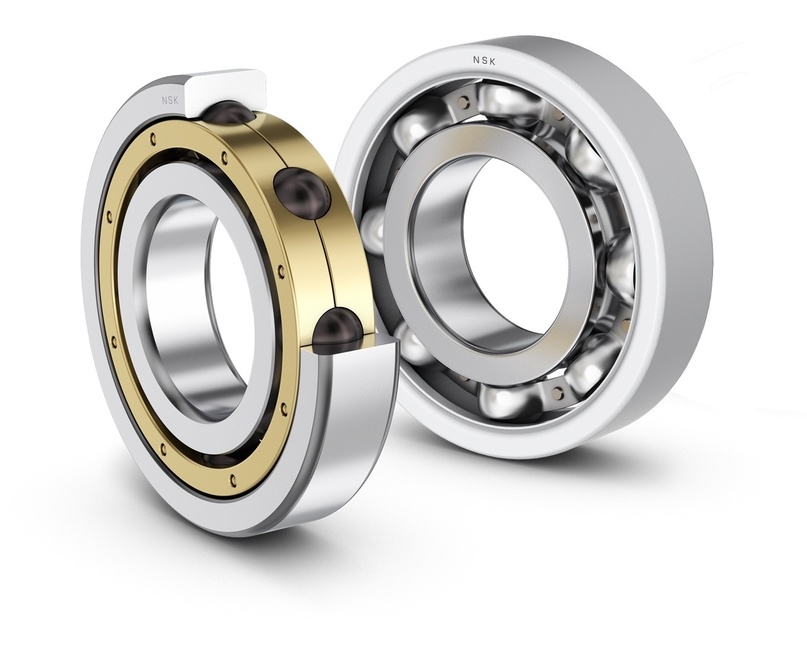Apr 24, 2024 | Roulement automatique
Tapered bearings are a type of roller bearing in which the rollers are located at an angle to the main axis. This allows you to cope not only with axial, but also with radiation loads. As the angle of the roller position relative to the axis increases, the bearing can withstand a significant axial load. En même temps, the maximum radiation dose decreases.
A tapered roller bearing consists of two races – an outer and an inner ring, between which the rolling elements are placed. The rolling elements are cylindrical rollers located at an angle to the contour. The design forms a cone in which the rollers are separated by a cage for uniform distribution. The presence of a separator and high precision manufacturing of all parts and seats ensure smooth and uniform operation of the bearing without shaft misalignment, radial runout and overheating.
Tapered roller bearings have found application not only in machine tools, but also in the automotive industry, as well as light and heavy industry. The parts are found in hub designs, boîte de vitesses, and equipment for the mining and energy industries.
Accordingly, all of the above-described industries are directly related to combined loads, namely axial and radial.
Apr 16, 2024 | Roulement automatique
6312-2Z radial single row ball bearing is one of the most common bearing types used in various industrial and household equipment. 6312-2Z is suitable for radioactive loads. Its design includes an inner ring and an outer ring with a sphere between them. The bearing has two protective pads (2AVEC) to prevent dust and dirt from entering the sphere, thus ensuring long service life and reliability. Donc, the radial single row ball bearing 6312-2Z is a reliable universal component, which is suitable for various industries. Because of its characteristics and size, it is very suitable for use in various parts and mechanisms to ensure their long-term uninterrupted work.
Apr 2, 2024 | des nouvelles
The car release bearing is installed between the clutch and the transmission. The release bearing seat is loosely sleeved on the tubular extension of the bearing cover of the first shaft of the transmission. The shoulder of the release bearing is always against the release fork through the return spring, and retreats to the final position to maintain a gap of about 3 ~ 4mm with the end of the release lever (release finger).
Since the clutch pressure plate and the separation lever run synchronously with the engine crankshaft, and the separation fork can only move along the axial direction of the clutch output shaft, it is obviously impossible to use the separation fork directly to dial the separation lever. Through the automobile separation bearing, the separation lever can rotate and move along the axial direction of the clutch output shaft, so as to ensure that the clutch can connect smoothly, separate softly, reduce wear and prolong the service life of the clutch and the whole transmission system.
Mar 26, 2024 | Roulement automatique
These incredible engineering components have laid the foundation for achieving excellent accuracy and reliability in various devices and systems.
High-precision bearing is the core of any mechanical device, in which excellent rotation accuracy is very important.
With their ability to minimize friction and wear, they ensure the durability and high efficiency of the equipment.
Making them is an art that requires precision technology: from strict tolerance to pure processing, every production step aims to create a perfectly smooth and rounded surface.
High-precision bearings, it seems insignificant but plays a key role in modern mechanical innovation.
Jan 15, 2024 | des nouvelles
Angular contact ball bearings are a cornerstone technology in the world of mechanical engineering and machinery, serving as critical components for ensuring high-precision rotation, reduced friction, and optimal load-bearing capacity. These specialized bearings have revolutionized the way machines operate by providing superior performance under combined radial and axial loads, making them indispensable in industries ranging from aerospace to automotive, robotics to medical equipment.
Understanding Angular Contact Ball Bearings
UNEngular contact ball bearing is a type of rolling-element bearing that separates two rotating parts while facilitating their relative motion. They differ from standard ball bearings due to their design, which allows for the bearing to handle both radial (perpendicular to the shaft) and axial (parallel to the shaft) loads simultaneously. This capability is achieved by the fact that the balls in the bearing make contact with the inner and outer raceways at an angle, hence the name “angular contact.”
Design Features and Variations
Angular contact ball bearings typically come in single-row or double-row configurations. In single-row designs, one side of the bearing can support an axial load in either direction. Double-row versions provide increased load-carrying capacity and are designed to accommodate both thrust and radial loads in either direction.
The contact angle, usually denoted by ‘α’, plays a significant role in determining the bearing’s properties. A larger contact angle indicates greater axial load capacity but lower tolerance for misalignment. Bearings with smaller angles allow for more flexibility and better handling of combined loads, albeit with less axial load capacity.
Applications and Advantages
Angular contact ball bearings find applications across a broad spectrum of industrial sectors where precision and reliability are paramount. They are widely used in:
1. High-speed spindles in machine tools – where they ensure stability and accuracy during machining operations.
2. Gearboxes and transmissions – for smooth power transmission and efficient energy transfer.
3. Pumps and compressors – to maintain high rotational speeds without overheating or premature wear.
4. Aerospace and defense systems – where lightweight yet robust bearings are crucial for gyroscopes, helicopter rotor heads, and other precision mechanisms.
5. Medical devices – such as CT scanners and MRI machines, which require extremely precise and quiet rotary motion.
Key advantages of angular contact ball bearings include:
– High rigidity and resistance to deformation under heavy loads.
– Low frictional torque, leading to higher efficiency and lower operating temperatures.
– Excellent running accuracy and stability due to tight manufacturing tolerances.
– Compatibility with high rotational speeds, making them ideal for high-speed applications.
Maintenance and Selection
Proper selection and maintenance of angular contact ball bearings are essential to maximize their lifespan and performance. Factors such as load conditions, speed requirements, and operating environment should be carefully considered when choosing a bearing. Regular lubrication and inspection for signs of wear, contamination, or damage are vital to prevent premature failure.







